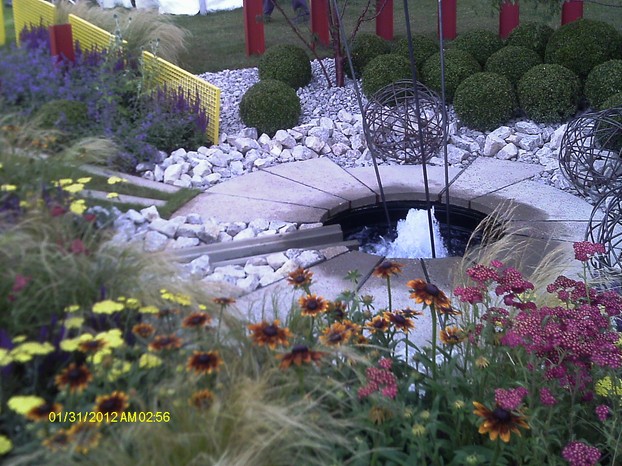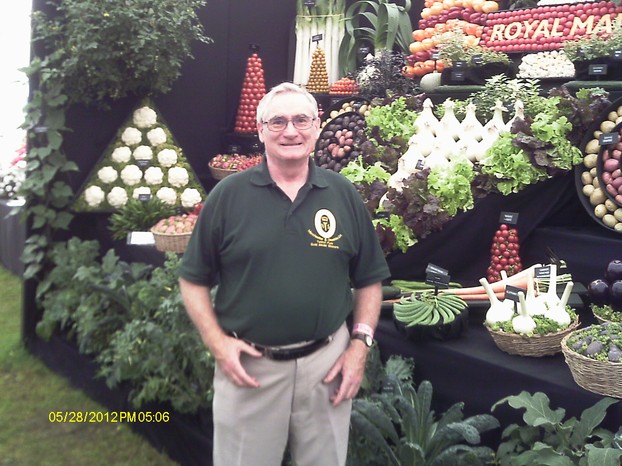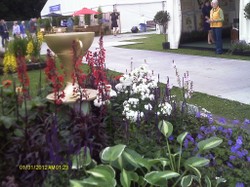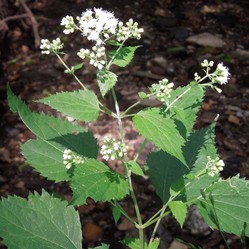Flower shows each have their own character, ranging from the very elite Chelsea show down through the ranks to some small, local affairs in a municipal park. Each one has its own character, as befits our isle that has a strong tradition of individuality and eccentricity. Some are for flowers only, but others display vegetables, while others have an agricultural theme as well. Visitors enjoy wandering among stalls selling food and sometimes other goods such as clothes and gardening items. To visit such a show is a lovely experience.

The British Flower Show
by frankbeswick
Britain is blessed with a great range of flower shows that run from Spring to Autumn [Fall.]
What Shows are Like.
I love visiting flower shows and even more doing them.What do I mean by doing? Well, I do three shows a year and would willingly do more. In two, the Tatton Show and Poynton Horticultural and Agricultural Show, both in Cheshire, I am a competitor and member of a team from the National Vegetable Society, who send in a group entry, and at the Southport Show on the Lancashire coast I attend with the Chartered Institute of Horticulture as an adviser to the general public. Being a participant is a great experience, so enjoyable. I have done a small local show in my capacity [then] as chairman of a garden society, again giving advice to local people.
Flower shows range in fame right from the small local show in the park right up to the nation's most elite one, the prestigious Chelsea show that merits a week of television shows.The queen always visits and competitors have to wear jacket and tie. Some flower shows are run by the Royal Horticultural Society [RHS] some by local communities or societies, while the Southport show is the largest independent show in the country.
Entries can be individual or team. I have almost always entered as part of a team, first from Trafford allotment and then as the National Vegetable Society. But the show gardens produced by garden designers are always individual entries, but even then the construction of such gardens is so expensive that most of them are sponsored. In fact, the best path for a garden designer is to find a charity, public body or company that wants to commission a show garden and get hired. Getting a successful commission for a show garden at Chelsea is the path to career success for a garden designer. But the famous television gardener,Alan Titchmarch, who has designed two gold medal winning gardens at Chelsea lamented the soaring costs. Nowadays the designer hires a construction team, the preparation takes weeks, and dismantling is not a quick process, especially as some gardens are taken by the sponsors for their own grounds or sold. Designers have to purchase plants from high class nurseries, who make a good profit and get many kudos for growing for a prestigious show. Sometimes plant nurseries enter to promote their name, for a gold medal is a great advertisement for them.Private individuals enter in categories such as best carrots and so on.
I learned my lesson when entering a small local show. I had been planning to enter a pumpkin, but I noticed a blemish and submitted a smaller one. When I got to the show I found that my rejected offering was better than the gold winner and I only won bronze! A medal yes, but the experience taught me to have more confidence.
You may wonder how they transplant a show garden. Well, the plants are all in pots, whose tops are covered by a layer of compost to make them look as though they are springing straight from the ground. The compost is cleared and then the plants are ferried away.
I recommend the film, Dare to be Wild, which recounts the experiences of Mary Reynolds, a slightly quirky Irishwoman who won gold at Chelsea.
Preparing for the Show.
Tuesday 5th March 2019 and Jeff came into the meeting bearing a large bag of potatoes, went to the front and gave them to Sandra, the chairwoman. In this branch all our office holders [chair, secretary and treasurer] are female, not because of political correctness [we are not so stupid] but because these three are demonstrably the best persons for the job. Sandra is the creative and organising brain behind the Manchester and Cheshire branch of the National Vegetable Society show entry. Owing to a medical problem she does not do much physical work on the entry, she often has to sit and direct, but we are happy with that. Without her direction and skill we would probably win little. Noelle, the secretary, runs the whole Poynton Show as show secretary, as well as working for NVS, and Jill has stewarded our funds for many a year.
We use people according to their skills. Jeff is brilliant with his hands and does much construction and maintenance work on the display. The general agreement is that my strong point is meeting and greeting the general public, pulling in the visitors and explaining the exhibits to them. So on preparation days before the show starts they use me as a labourer,to support others, but on a show day they stick me for the whole day on the stall and let me get on with the job of dealing with the public. I have carved out this role for myself, even at open days for my own allotment.
Anyway, you may be wondering what Jeff was doing with a bag of potatoes. Well, Sandra allocated them to individuals, five each. They were to be grown for the show. I took my share and Sandra made a note, five Charlottes for me. The rule was simple. Grow them in bags, one potato per bag, so that they will grow large-hopefully. We want big ones for the show.
Two days later Andrew [my son] and I went to the allotment. I had set up some tyre planters, one tyre atop another, to grow some pumpkins for the Poynton Show [Noelle commissioned a pumpkin from me after the last show.] I decided to use some of them for potatoes. We filled plastic rubble sacks with multi-purpose compost, added fertiliser and placed the bags in the planters, which will protect the sacks against wind and various wild animals,the fox and dogs mainly.With the weather that we are having I am going to have to ensure that the bags do not flood and become waterlogged, but a simple nick to the sides will do the job. I intend to tend these bags very carefully!
There is more yet to grow and I will do my share, but I do not know what it is yet. Watch this space or rather the comment boxes.
The Tatton Show
 Tatton Show Display Frank Beswick |
Preparations Continue
As the show approaches there is much to do. The Royal Horticultural Society, who run the Tatton Show, insists that every entrant has a photo I.D. for a specific day. This is to prevent terrorism and theft. Competitors preparing stalls must have strong shoes or boots and have access to a hard hat, as machinery is working on the site. High visibility jackets are compulsory. The site will see trucks coming and going as the displays are brought to the stalls. Food stalls are yet to be opened, but there is always a food tent for competitors, for convenience always in the same place.
Preparing the stall is taken to a fine art. Entries are finessed to make them look their best. The area around the stall is kept meticulously tidy.Take a look at the picture below to see the finished product.It was taken at Tatton. You will notice that vegetables have to be affixed according to a plan. There are containers of different shapes, each of which has to be filled properly. You will notice tomatoes, each of which must be individually pinned to a foam ball with a cocktail stick, which takes much work if you want to do it in an aesthetically pleasing way. You will see onions surrounded by bed of parsley, which provides the greenery. The greenery must be kept moist and sometimes during show days, especially in longer shows like Tatton, replaced. Spray guns for water have to be provided; and the public cannot see the reserve supplies under the stall. Take a look at the greenery at the base of the stall, you will not see it again, for we are abandoning that part of the display after it attracted white fly last year. We must keep our eyes open for pests and be constantly vigilant. There will be an artistic image made of vegetables, but what it will be is a secret, so sorry folks, I cannot say.
Don't imagine show days are easy. If you are on a stall you are on your feet for many hours, which does no good for elderly persons' backs. But the experience is so rewarding. Being surrounded by people who relish plants and beauty, hearing positive comments about how lovely the display is and being able to inspire children with a love of plants are pleasant and fulfilling experiences. When a wheelchair bound person comes you manoeuvre them as close to the stall as possible to maximise their enjoyment, and you can talk to them. The elderly are often lonely and you can make their day a positive experience where they see beauty and get some company.
This is why I love doing flower shows. I am hoping for at least three this year and am open to do more if the opportunity turns up.
 The Display Frank Beswick |
You might also like
My Successful Search for Edible LandscapingMany years ago, I went on a quest to find the best edible landscaping for Flo...
White Snakeroot - A Versatile and Little-Known WildflowerWhite snakeroot, Ageratina altissima, is a wildflower native to Eastern North...







 TheThousand Year Garden29 days ago
TheThousand Year Garden29 days ago
 Women of the Gospelson 10/11/2025
Women of the Gospelson 10/11/2025
 Religious Gardenson 08/25/2025
Religious Gardenson 08/25/2025
 Doctor of the Church: John Henry Newmanon 08/03/2025
Doctor of the Church: John Henry Newmanon 08/03/2025



Comments
We are not at Tatton Park for long, about ten days, and it is Summer rather than Fall. So we do not need the leaf blowers.
Thank you!
Some Unitedstatesians employ leaf blowers -- as clippings, debris, dirt blowers -- for insect pest-free, insect pest-reduced control.
Some Unitedstatesians gather all those blown-together clippings, debris, dirt for composting even as other Unitedstatesians gather them for Waste Management collection days.
Is this a Tatton Show problem year weed-mitigating strategy?
Keeping the ground free of weeds to prevent cover for insects. Encouraging predators.
Keeping the ground free of weeds to prevent cover for insects. Encouraging predators.
Thank you!
Your last in-text image boosts my fresh garden-vegetable appetite perhaps as much as insect attendees'.
What methods did you employ to control insect attendance, particularly in the Tatton Show problem year?
At times. We had difficulties with insects atbthevTatton Show one year.
Saturday morning one cabbage-white butterfly (Pieris rapae) and two eastern tent-caterpillars (Malacosoma americanum) became my first-observed respective insect and pest.
This early afternoon a bumblebee (Bombus spp) became my second-observed insect.
So I began to consider whether or not flower shows such as the British above end up with insect-species attendees.
Your last in-text image features an enticing array of nice-looking, nice-scented, nice-tasting, ice-textured edibles.
Is insect attendance a problem?
We will not see as much lavender at flower shows this year as the Royal Horticultural Society has had to ban imported lavender from its shows this year so as to prevent the spread of xylella fungus, for which lavender is a host. This will not affect me at all.
Thanks.
As the judges do not know what last year's stall was like creativity is not very important. Getting the exhibits perfect is important. Not everyone speaks as much as I do, but I enjoy it. Standing for a long time brings back ache. At the last Tatton Show I brought my walking staff to lean on, but at the Poynton show the show secretary brought me a chair. Sandra, our chairwoman, uses a chair at the shows as she has medical problems.
Frank, I can see a happy expression in that last photo.
I suppose the difficulty must be originality, since each show is repeated year after year. Repetition would not do, and neither would repeating a competitor's stand. So, I am guessing the most challenging part is creativity, or maybe it is second to endurance of speaking for hours on end.